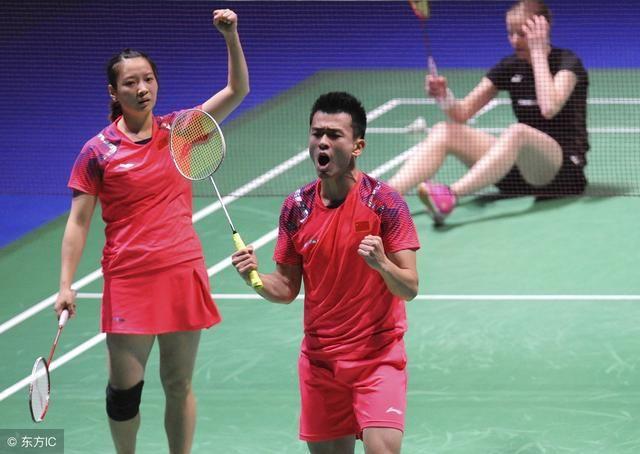燕子大班教案及反思
Title: Developing Physical Education Lesson Plans for Primary School Using the LargeClass Swallow Method
Introduction:
In primary school settings, physical education (PE) plays a crucial role in promoting students' physical health, social skills, and overall wellbeing. Designing effective PE lesson plans tailored to large classes requires careful consideration of various factors. This guide will outline key principles and strategies for developing PE lesson plans using the LargeClass Swallow method.
Understanding the LargeClass Swallow Method:
The LargeClass Swallow method is a pedagogical approach tailored to accommodate large groups of students in physical education settings. Derived from traditional Chinese martial arts training, this method emphasizes fluid movements, efficient use of space, and inclusive participation. By integrating principles of coordination, cooperation, and creativity, the LargeClass Swallow method fosters an engaging and dynamic learning environment for students of all abilities.
Key Components of PE Lesson Plans:
1.
WarmUp Activities:
Begin each lesson with dynamic warmup exercises to prepare students' bodies for physical activity. Incorporate activities such as jogging, stretching, and calisthenics to increase heart rate and flexibility gradually.
2.
Skill Development:
Focus on teaching fundamental movement skills, including running, jumping, throwing, and catching. Break down each skill into manageable steps, providing demonstrations and opportunities for guided practice.3.
GameBased Learning:
Integrate games and activities that reinforce skill acquisition in a fun and interactive way. Emphasize cooperative games that promote teamwork, communication, and sportsmanship.4.
CoolDown and Reflection:
Conclude each lesson with a cooldown period consisting of stretching and relaxation exercises. Facilitate a brief reflection session where students can share their experiences and insights from the lesson.Applying the LargeClass Swallow Method:
1.
Fluid Movement Patterns:
Organize activities that allow students to move freely within the designated space without overcrowding or collisions. Use clear verbal instructions and visual cues to guide transitions between exercises.2.
Adaptability and Differentiation:
Modify activities to accommodate students with varying skill levels and abilities. Provide options for challenge levels and encourage peer support and collaboration.3.
Utilization of Space:
Maximize the use of available space by arranging equipment and markers strategically. Designate clear boundaries and pathways to prevent congestion and ensure safety during activities.4.
Engagement and Motivation:
Keep students engaged by incorporating elements of choice, creativity, and novelty into lesson activities. Provide positive reinforcement and encouragement to foster a supportive learning environment.Guidelines for Lesson Implementation:
1.
Preparation:
Plan lessons in advance, considering factors such as equipment availability, safety considerations, and lesson progression. Communicate clear objectives and expectations to students at the beginning of each lesson.2.
Monitoring and Feedback:
Circulate among students during activities to observe participation levels, skill execution, and safety practices. Provide constructive feedback and reinforcement to individual students and groups as needed.3.
Flexibility and Adaptation:
Be prepared to adapt lesson plans in response to unexpected challenges or changes in student dynamics. Maintain a flexible mindset and prioritize student engagement and enjoyment.4.
Reflection and Evaluation:
Reflect on each lesson's effectiveness and identify areas for improvement. Solicit feedback from students and colleagues to inform future lesson planning and instructional practices.Conclusion:
Incorporating the LargeClass Swallow method into physical education lesson planning offers a dynamic and inclusive approach to engaging large groups of primary school students. By emphasizing fluid movement patterns, adaptability, and cooperative learning, educators can create enriching PE experiences that promote students' physical, social, and emotional development.
References:
"Physical Education for Primary Schools: Principles and Practices" by Ken Hardman
"Teaching Physical Education: A Handbook for Primary and Secondary School Teachers" by Richard Bailey
"LargeClass Teaching in Physical Education: Strategies for Engaging Students K12" by Maria Corte
欧洲杯直播
MORE>-
09-20最后时刻遭围攻,迈阿密险平:梅西替补,分钟丢球
-
09-20周琦克星!广东最适合的大外援曝光,朱芳雨将截胡辽宁队?
-
09-20《摩纳哥与巴萨的激情碰撞》
-
09-19加纳乔本赛季造球超过姆巴佩,近天进球和桑乔今年一样多
-
09-19制造胜率高达%,仅次于弗格森!滕哈格真是杯赛专家?
-
09-19孔帕尼三连胜:执教拜仁开启追求蓝图的新篇章
-
09-18破案了!国足换帅叫停原因找到,强赛计划有变,伊万阴谋得逞
-
09-18杨政回应未通过体测:早知道要体测就不参选已尽力否认嘲笑牟进宏
-
09-18贾巴里·史密斯:火箭的完美副手与宝贵特质
-
09-18不愧名帅!水庆霞近轮豪取分:击败女足卫冕冠军武汉!
-
09-18韩网评选世界赛阵容竟落选
-
09-17孙杨张豆豆晒合照送中秋祝福
-
09-16王楚钦输球是假球?许昕说实话了→
-
09-16阿塞拜疆正赛:皮亚斯特里夺冠,塞恩斯&佩雷兹退赛
-
09-16冠军战霸气完封波多黎各,日本棒球队世界杯夺冠,缔造连霸
-

2024今晚香港开特马开什么六期,答案解析解释落实掌握天下事_中级版33.291
在2024年的香港特马开奖活动中,众多彩民和观众都在关注着每一期...
-

2024年新澳门王中王资料,答案解析解释落实掌握天下事_3D6.3
在信息爆炸的时代,掌握最新的资讯成为了每个人不可或缺的能力。20...
-

最准一肖一码100%中,答案解析解释落实掌握天下事_辅助版2.11
在博弈领域,”最准一肖一码100%中”这一说...
-

黄雅琼黄凯祥分手事件解析
黄雅琼和黄凯祥是一对知名的明星情侣,他们的分手事件引起了广泛关注。在...
-

最准一肖一码100%香港78期,答案解析解释落实掌握天下事_平台版8.52
在当今信息爆炸的时代,人们对于获取准确信息的需求日益增长。特别是在博...
- 搜索
- 最近发表
-
- 布莱顿连续两次战平,英联杯主场迎战狼队能否重拾信心?
- 岁少年捧回世界西餐大会厨王金牌!父亲是上市公司老总,他从小喜欢做菜,从每天切八九十斤萝卜开始学厨
- 罗滕谈登贝莱思考人生:他还是从前那个少年,上一场双响才是反常
- 西班牙vs葡萄牙比赛结果
- 美国足球大联盟赛制
- 荷兰欧洲杯数量多少次了
- 篮球学校体育室要求
- 曼城无缘开门红!瓜迪奥拉全场被压制,国米复仇宣告失败
- 英格兰欧洲杯历史战况如何
- 足球杯赛含金量排名
- 中国cba赛程表
- 湛江学考体育体操
- 最后时刻遭围攻,迈阿密险平:梅西替补,分钟丢球
- 美团欧洲杯积分怎么算
- 今天西甲西班牙人比赛
- 苏炳添百米决赛第6
- 云南省体育生招生考试
- 周琦克星!广东最适合的大外援曝光,朱芳雨将截胡辽宁队?
- 葡萄牙欧洲杯跟哪个队
- 运动会是体育竞赛吗
- 标签列表
-
- 2024年欧洲杯主办国 (17)
- 2024欧洲杯比赛时间 (20)
- 欧洲杯参赛球队有几支 (9)
- 2024欧洲杯百度百科 (21)
- 2024欧洲杯杯 (9)
- 2024年欧洲杯预选赛 (14)
- 2024年欧洲杯开幕时间 (10)
- 2024欧洲杯完整赛程表 (10)
- 2024欧洲杯主办城市 (17)
- 欧洲杯为什么没有中国 (13)
- 在哪里可以看欧洲杯预选赛 (11)
- 2024欧洲杯预选赛 (11)
- 欧洲杯在哪个国家举行2024 (12)
- 2024欧洲杯全部赛程 (10)
- 欧洲杯为什么没有直播 (15)
- 欧洲杯一共多少球队 (13)
- 欧洲杯历届冠军一览表 (10)
- 欧洲杯 (14)
- 欧洲杯赛程 (11)
- 直播吧官网 (10)
- 足球即时完整比分 (12)
- 2022年世界杯 (12)
- 直播8 (10)
- 直播吧 (21)
- 直播软件 (10)
